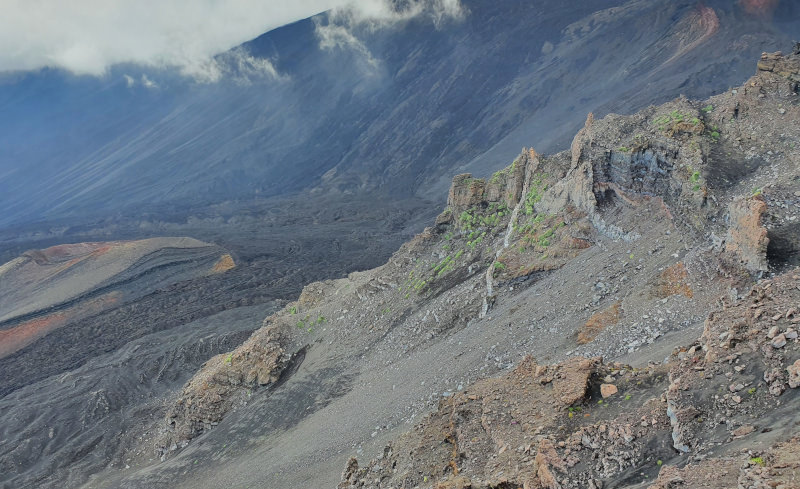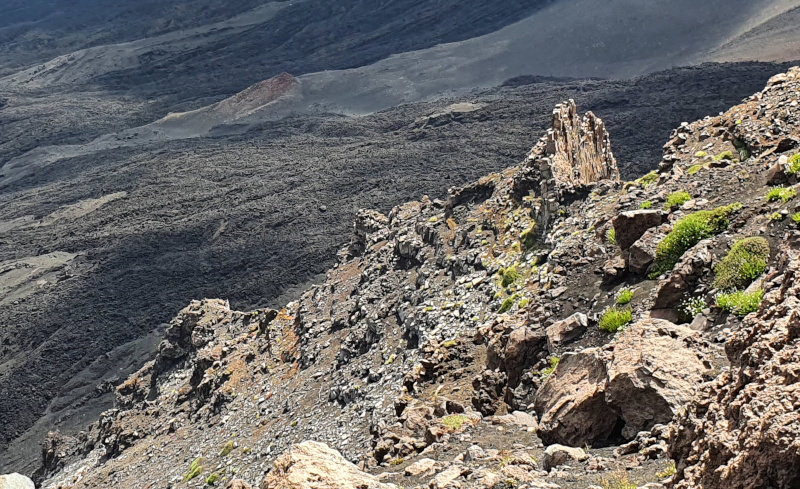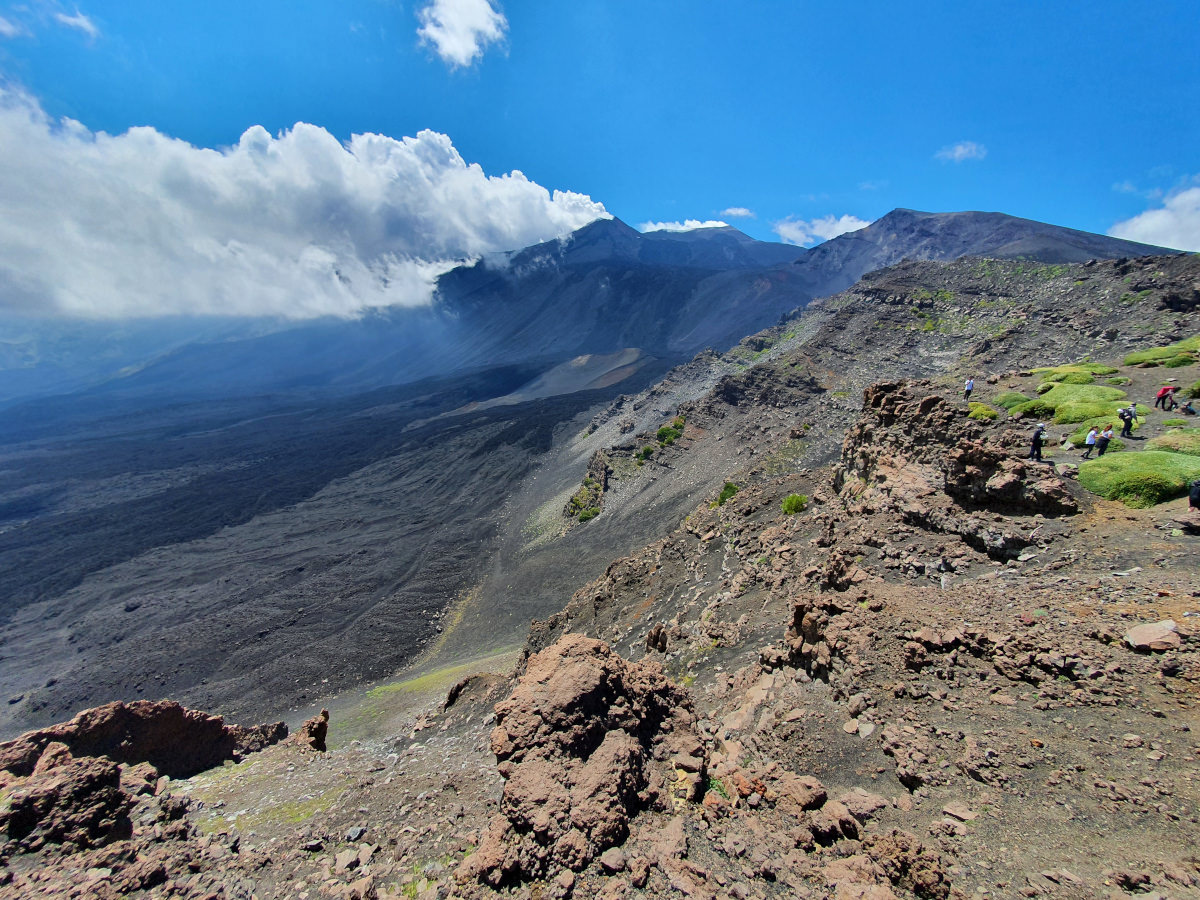The Valle del Bove (Valley of the Ox) is a huge valley about 5 km wide and about 7 km long (37 square kilometres in total) on the eastern side of Mount Etna, facing the sea. The rims of the valley are up to 1,000 metres high and some of them drop vertically.
The formation of the Valle del Bove
According to the latest research, this impressive valley was formed about 8,000 years ago. The summit at that time (said to have been about 3,700 metres high) collapsed as a result of explosions and eruptions, the rock masses rolled into the sea and left this enormous “wound” on the volcano. It is unclear whether the valley was formed by a single collapse or several, according to the latest theories there were two, one 10,000 years ago and one 8,000 years ago.
Even today, the structure of the volcano at that time can still be guessed at: If you look at Etna from the east, e.g. from Giarre or Riposto, you can see that the edges of the valley do not run all the way to the main crater, but end beforehand in two promontories: the Pizzi Deneri (2850 m) in the north and the Montagnola (2613 m) in the south. These are still clearly separated from the main crater by plateaus, the Piano delle Concazze and the Piano del Lago respectively.
The special microclimate on the eastern side
For a long time, the Valle del Bove was a green oasis on this stone giant, full of lush forests and meadows where shepherds tended their sheep and fruit was grown. This is probably where the name of the valley comes from (but this is not completely clear). The reason for this is the unique climate that prevails on the eastern side of the volcano: the sun warms the black earth of the volcano every morning and the hot air rises. On the east side, humid air from the sea follows, which cools down with increasing altitude. Cold air can no longer absorb the same amount of moisture. So the moisture condenses and clouds form, bringing shade and precipitation. In this special microclimate, plants thrive that are normally only found much further north, such as apples, pears, chestnuts or hazelnuts.
However, due to several eruptions of the south-eastern crater, beginning in 1971, the valley was almost completely covered by the lava flows, so that today it is a black stone desert.
It was not until the eruption of 1991 to 1993 that the lower-lying Val Calanna valley adjacent to the Valle del Bove was devastated by a lava flow that continued to Zafferana, destroying the first house there and fortunately stopping before the second house.
Even today, fortunately, the lava flows from the south-eastern crater often pour into the Valle del Bove, where they cannot cause any damage.
Geological peculiarities
For volcanologists, the Valle del Bove is a real treasure. On the walls of the valley you can see the countless layers of lava. These were exposed by the collapse of the summit, thus making Etna’s history freely accessible.
One geological formation can be seen particularly well in the Valle del Bove: so-called dikes (also dykes). These free-standing, vertical walls of lava are formed as follows: during an eruption, fissures form in the ground and fill with the rising, hot lava. After the eruption, this lava begins to cool. Since lava is a poor conductor of heat, the heat cannot be transferred to the surrounding rock, but only upwards, to the air. The lava in the fissures therefore cools extremely slowly; decades after an eruption, you can still feel the heat on the surface. When lava cools slowly, it becomes very hard, harder than the surrounding rock layers. Now, when the earth is eroded away again, this extremely hard lava remains and forms the bizarre sculptures.


The only two craters you can see in the Valle del Bove are Monte Centenari and Monte Simone.
How can you hike the Valle del Bove?
The valley can be reached by jeep from the northeast, coming from the Mareneve road. You can drive at least a short distance into the valley and across a lava flow. Then it is only possible to continue on foot along the “Sentiero di Saro Ruspa”.
This path is named after an excavator driver who, during the eruption from 1991 to 1993, tried with tireless work to stop the lava flow that was moving towards Zafferana. His excavator tipped into the lava flow during the work. Miraculously, Saro Ruspa escaped and survived.
However, this unique formation is only really impressive when viewed from above, i.e. from the rim of the valley.
We come on our tours either from the south (South Etna Tour) or the north (Etna Trekking Tour) up to the valley Valle del Bove, standing directly in front of the abyss and thus looking from the summit craters over this enormous notch to the sea.

